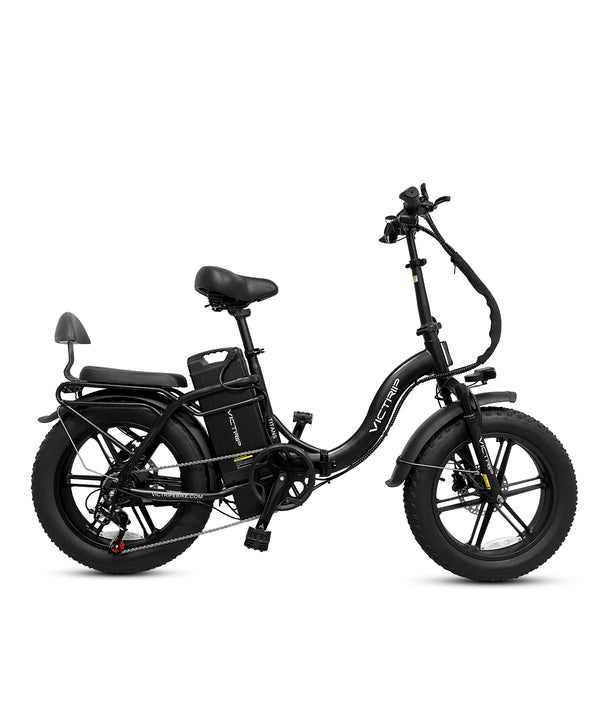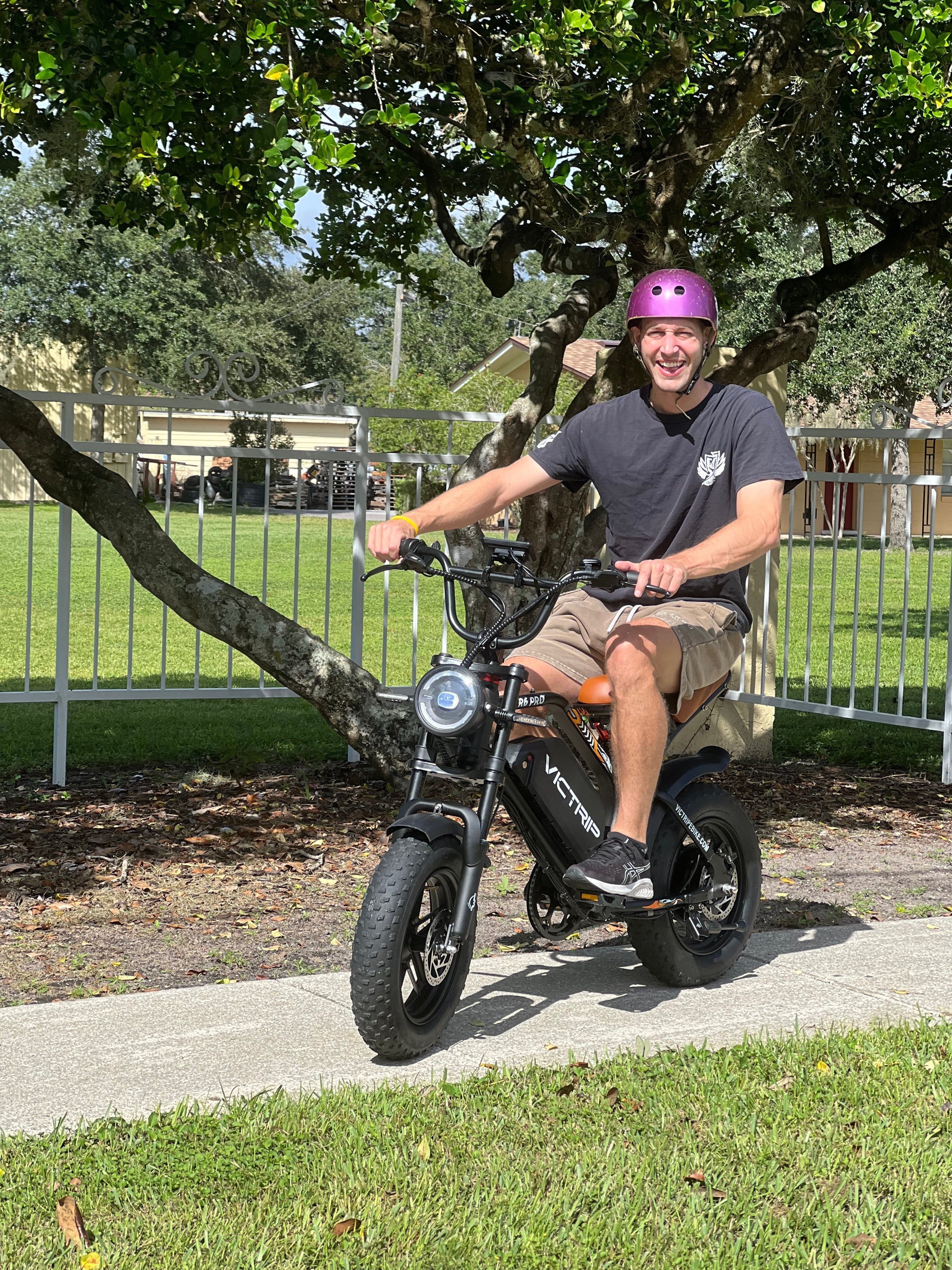If you’re still wondering whether to make the leap, here’s the short version: 5 Reasons Every Commuter Should Switch to a Long Range eBike are practical, measurable, and immediate — longer range means fewer range-anxiety headaches; lower costs beat transit or driving; commute times often drop; health and environmental wins are real; and modern eBikes are built for daily life. Read on for the full argument, step-by-step guidance, and answers to common questions.
Reason 1: Dramatically extended range and reliable daily performance
What “long range” means (battery, watt-hours, range under real conditions)
When people say “long range” eBike, they typically mean a bike designed to deliver consistently long real-world range, not just a thermodynamic lab figure. Real-world long-range bikes generally use batteries in the 600–1,200+ watt-hour (Wh) range, paired with efficient motors (250–750 W nominal, depending on region and class). That lets commuters routinely manage 40–100 miles per charge in mixed-assist riding — enough for many daily round trips without charging midday.
Why the emphasis? Because real-life factors — rider weight, hills, wind, cargo, and mode of assist — change how far a battery will take you. A bike rated 80 miles may perform like 50–60 miles under heavy loads or hilly routes. Long-range designs give you a buffer, so you’re not guessing whether you’ll make it home.

Real-world examples & typical commute scenarios
-
Short urban commutes (3–8 miles each way): a long-range eBike can run for days without charging. That’s unbeatable convenience.
-
Medium suburban commutes (8–20 miles one-way): a 700–900 Wh pack usually covers a round trip with reserve.
-
Mixed commutes (multi-modal, last-mile carrying): long-range batteries keep you flexible — you can add cargo and still finish comfortably.
Practical takeaway: switching to a long-range eBike removes the “Did I charge it?” friction and makes electric commuting reliable and repeatable.
Reason 2: Major cost savings over time
Comparing total cost of ownership: bike vs car vs transit
Upfront, a quality long-range eBike can cost anywhere from several hundred to several thousand dollars. But when you look at total cost of ownership (TCO) — purchase, maintenance, energy, parking, insurance, and depreciation — eBikes often win for typical city commutes.
A simplified TCO comparison (annualized) often reveals:
-
Car: fuel + insurance + parking + maintenance + depreciation → high and rising.
-
Transit: fare + time cost + occasional rideshare → moderate.
-
eBike: initial cost amortized + minimal energy + low maintenance → low.
Hidden savings: parking, tolls, insurance, maintenance
-
Parking: most cities charge for car parking; eBikes often park free or cheap.
-
Tolls & congestion charges: not an issue on an eBike.
-
Insurance: usually lower or optional for eBikes.
-
Maintenance: eBikes need brakes, tires, and occasional motor/battery checks — but no oil changes or complex engine servicing.
Put plainly: if you commute under ~10–15 miles one-way, you can often recoup an eBike investment in months or a couple of years, depending on alternative costs.
Reason 3: Faster, more predictable commute times
Micro-mobility lanes, congestion avoidance, average speed gains
City driving is unpredictable. Long-range eBikes let you:
-
Use bike lanes and paths to bypass gridlock.
-
Keep a steady average speed (12–20 mph typical for assisted commuting) that beats average car speeds in dense CBDs during rush hour.
-
Avoid searching for scarce parking spots.
That predictability means less stress and better time management. It also reduces "buffer time" you normally allow when you worry about traffic.
Route planning & battery management tips
-
Choose mixed routes that favor protected lanes when possible.
-
Use eco/eco+ modes for long stretches and boost for short hills.
-
Consider a removable battery so you can top up at work if needed.
Commuters who use performance-oriented models such as the VICTRIP TITAN S Long Rang Ebike often report not just longer range but smoother torque delivery, efficient power management, and faster charge times — ideal for those who want both speed and dependability.
Small habits — like leaving home with a 90% charge and using mid-assist settings — turn a long-range eBike into a time-saving machine rather than a battery drain.
Reason 4: Health, wellbeing, and environmental benefits
Physical activity without sweat (pedal-assist balance)
One of the best parts of modern pedal-assist eBikes: you get meaningful exercise without arriving soaked. That mild-to-moderate exertion can improve cardiovascular health, lower stress, and keep you more alert than passive commuting. You get the health win with the convenience of power when you need it.
Emissions savings: simple math
Replace a car commute with an eBike commute and the emissions savings are straightforward: far fewer tailpipe miles, reduced fuel consumption, and lower lifecycle emissions per passenger mile — especially if your electricity mixes in renewables. Over a year, many commuters cut carbon footprint drastically by switching even a few weekly trips.
Reason 5: Practicality, cargo, and daily usability
Accessories, cargo systems, and commuting setups
For many urban riders, the defining advantage of a long-range eBike is its practicality. Beyond speed and savings, modern commuters need reliable ways to transport daily essentials—laptops, groceries, kids’ gear, or even camping supplies. That’s where durable cargo systems and trailers redefine convenience.
The VICTRIP TITAN S, when paired with an EBike trailer, transforms into a powerful urban utility vehicle. This setup allows riders to carry impressive loads—up to several dozen pounds—without sacrificing stability or speed. Whether you’re hauling office supplies during the week or outdoor equipment for weekend getaways, this combination of endurance and carrying power makes long-distance commuting simpler than ever. Its balanced frame and torque distribution keep handling smooth, even with additional weight behind you.

Weatherproofing, security, and multi-modal trips
-
Fenders and chain guards reduce grime and keep you presentable.
-
High-quality locks and secure parking reduce theft risk.
-
On mixed commutes, eBikes fit into trains and buses in many cities — but check local rules.
Practicality is no longer a compromise; it’s part of the design.
How to choose the right long-range eBike for your commute
Battery size, motor, frame, weight, legal considerations
-
Battery: aim for 600 Wh+ if you want consistent long-range performance.
-
Motor: mid-drive motors optimize efficiency and climbing; hub motors are simpler and often cheaper.
-
Frame: consider step-through models for easy on/off and cargo frames for hauling.
-
Weight: heavy bikes mean more effort when unpowered; but more battery usually means more weight — balance is key.
-
Legal: check local eBike class laws (top speed, power rating, helmet and age rules).
Must-have features and optional extras
Must-haves: reliable brakes (hydraulic preferred), puncture-resistant tires, integrated lighting.
Nice-to-haves: removable battery, integrated GPS, integrated lock, cargo-ready racks.
TOP PICK

VICTRIP®TITAN S 1000W Ebike
$1,499.00
Real-world commuting plan: a 30-day transition guide
Week-by-week checklist
Week 1 — Test and learn
-
Try short trips and adjust seat/handlebar positions.
-
Learn pedal-assist modes.
Week 2 — Commute twice
-
Try the full commute round-trip twice; note any battery/gear issues.
-
Test storage at work.
Week 3 — Optimize
-
Add racks/panniers or a small trunk bag.
-
Fine-tune tire pressure and assist settings to maximize range.
Week 4 — Routine
-
Commit to a full workweek on the eBike. Celebrate the consistency.
Troubleshooting common obstacles
-
Range anxiety: use economy modes, avoid heavy boosts, or plan a workplace top-up.
-
Weather: add rain gear and fenders; consider an eBike with front suspension for wet roads.
-
Security: invest in a quality lock and check secure parking options.
Cost-benefit mini-case study
| Item | Car (annual) | Transit (annual) | Long-range eBike (annual) |
|---|---|---|---|
| Fuel / energy | $2,000 | $0 | $50–$150 |
| Insurance | $1,200 | $0 | $0–$200 |
| Parking | $1,000 | $0 | $0 |
| Maintenance | $700 | $200 | $150 |
| Depreciation / financing | $3,000 | $0 | $400–$1,000 |
| Estimated annual cost | $7,900 | $200–$1,000 | $800–$1,700 |
Notes: figures are illustrative and will vary by city and individual circumstances.
How long-range eBikes support safety & legal compliance
-
Always confirm local eBike class definitions (Class 1, 2, 3 in many U.S. states).
-
Wear a helmet — it’s the single best safety investment.
-
Use lights and reflective gear for visibility, especially in low-light commutes.
-
Respect pedestrian areas and local rules for bike lanes.
Being legal and visible reduces friction and keeps you welcome on streets and paths.
Choosing the right accessories (short checklist)
-
Stable lock (U-lock + cable)
-
Waterproof panniers or trunk bag
-
High-quality helmet with MIPS if possible
-
Removable battery charger for workplace top-ups
-
Pump, multitool, and spare tube
Conclusion: making the switch — practical next steps
Switching to a long-range eBike is less about trendiness and more about practicality. If you value predictable commute times, lower costs, and a cleaner conscience — with the added bonus of better daily movement — then 5 Reasons Every Commuter Should Switch to a Long Range eBike convince quickly. Start by test-riding models with 600 Wh+ batteries, try a 30-day transition plan (above), and accessorize for cargo and weather. You might be surprised how fast a reliable long-range eBike becomes your simplest, happiest commuting tool.
FAQs
Will a long-range eBike replace my car entirely?
It depends on trip types. For daily commutes under ~20 miles one-way and with secure parking, many commuters replace most car trips. For long-distance travel, large family trips, or towing heavy loads, cars still win. But for routine commuting, shopping, and short errands, eBikes often replace cars more often than not.
How often will I need to charge a long-range eBike?
With a 700–900 Wh battery and moderate assist, many riders charge every 3–7 days depending on usage. For heavy daily commutes, charging nightly is common. Removable batteries help because you can charge at your desk.
How do I handle theft risk?
Use strong locks, remove the battery if possible, park in well-lit or monitored areas, and register your bike with local databases or services. Insurance specifically for eBikes is available in many places.
Are long-range eBikes legal everywhere?
Regulations vary. Many regions classify eBikes by power and top speed. Check local laws for where you live and commute. Generally, pedal-assist models that limit speed to defined values are widely permitted.
Is charging an eBike battery safe and environmentally friendly?
Modern eBike batteries are designed for safe charging when you use the supplied charger and follow manufacturer instructions. From an environmental perspective, even grid electricity reduces per-mile emissions compared to combustion engines — and if your grid includes renewables, the benefit grows.




Share:
How to Ride Your EBike Safely in Winter?
What Are the Pros and Cons to Full Suspension Moped Style EBike?